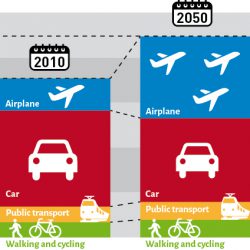'Transport poverty' is a new buzzword. I recommend no longer using this. There is certainly poverty in the Netherlands, because we have food banks and thirty-two thousand 'registered' homeless people, in reality more. Six percent of Dutch population lives below… Read More
The International Transport Forum organized a Round Table, in which I participated as one of the experts. International best practices and new scientific insights have been combined to identify ways forward. The results are now available in the final report and all presentations on the project page.
The main lessons that I draw from the international experiences are:
- Urban regions are the appropriate level to introduce a congestion charge. The problems and the possible solutions lie then in the same hands. The revenues of congestion charges are available for investments in urban accessibility. Since 1975 Singapore has a congestion charge. If the speed on a main road drops below 20 or 30 km/h, the price automatically increases until the desired speed is achieved. For urban highways the target speed is 45 to 65 km/h. After Singapore 12 other cities have introduced congestion charges.
- A thoughtful and balanced design of the scheme is required, to avoid unnecessary distributional effects. This is crucial in the search for sufficient public and political support. Opportunistic policies should not hold back the expert investigations. The final report goes into details related to spatial and social distributional impacts.
- Aim of the congestion charge should be the improvement of the urban accessibility. This has been achieved in all large cities. A congestion charge should not be part of wider taxation policies, because this diminishes public support.
July 2019



